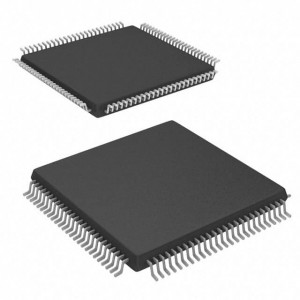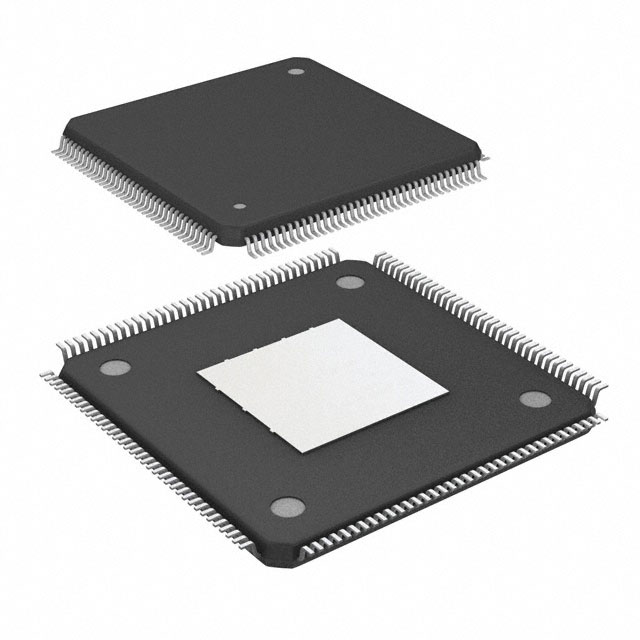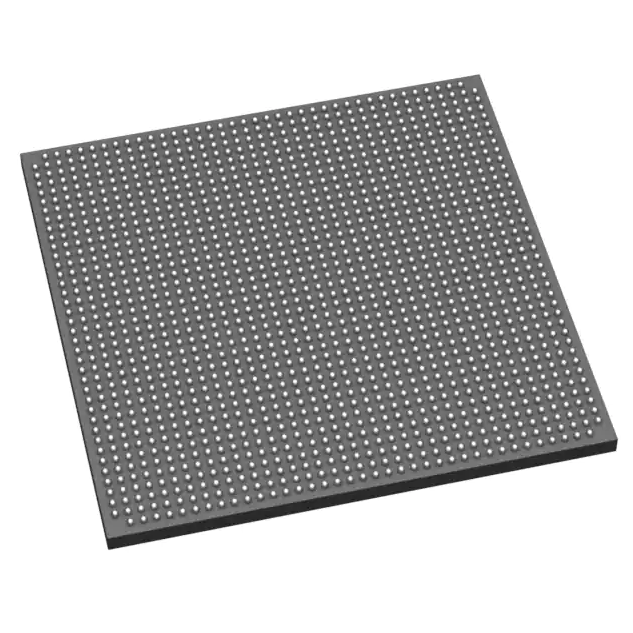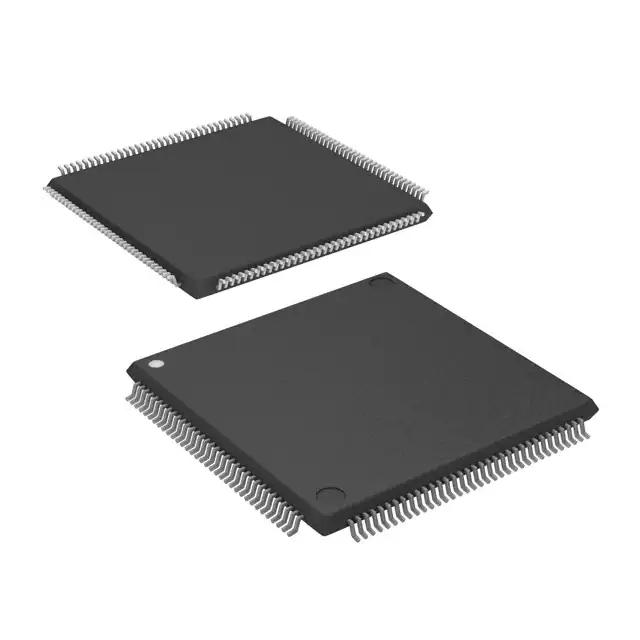A3PN060-VQG100I 100-VQFP (14×14) integrated circuit IC FPGA 71 I/O 100VQFP one spot buy
Product Attributes
| TYPE | DESCRIPTION |
| Category | Integrated Circuits (ICs) Embedded FPGAs (Field Programmable Gate Array) |
| Mfr | Microchip Technology |
| Series | ProASIC3 nano |
| Package | Tray |
| Standard Package | 90 |
| Product Status | Active |
| Total RAM Bits | 18432 |
| Number of I/O | 71 |
| Number of Gates | 60000 |
| Voltage – Supply | 1.425V ~ 1.575V |
| Mounting Type | Surface Mount |
| Operating Temperature | -40°C ~ 100°C (TJ) |
| Package / Case | 100-TQFP |
| Supplier Device Package | 100-VQFP (14×14) |
| Base Product Number | A3PN060 |
Microsemi
Microsemi Corporation, headquartered in Irvine, California, is a leading designer, manufacturer, and marketer of high-performance analog and mixed-signal integrated circuits and high-reliability semiconductors that manage and control or regulate power supplies, protect against transient voltage spikes and transmit, receive and amplify signals.
Microsemi’s products include standalone components and integrated circuit solutions that enhance customer designs by improving performance and reliability, optimizing batteries, reducing the size, and protecting circuits. applications.
Introduction to FPGAs at Microsemi
Microsemi acquired Actel in 2010, making Microsemi’s FPGAs three decades old. Actel’s FPGAs have been successfully used in more than 300 space programs over the past decade, proving that Actel’s FPGAs are unquestionably reliable.
The anti-fuse devices were mainly for the military market and not open to the civilian market, so the impression of Actel was always obscure until 2002 when its innovative Flash-based FPGAs were introduced, unveiling the mystery of Actel, which has since gradually made its way to the civilian market and is known to everyone. The first Flash architecture FPGA was ProASIC, whose single-chip characteristics equivalent to CPLDs and low power consumption and high capacity characteristics beyond those of CPLDs won the praise of development engineers, and more and more people used Flash architecture FPGAs to replace the original CPLDs and SRAM FPGAs.
As society’s needs continue to change, Actel is constantly improving its FPGA technology, constantly refining and enriching the functions and internal resources of FPGAs, and in 2005 Actel launched the third generation of Flash architecture FPGAs – the ProASIC3/E. The successful launch of the ProASIC3/E heralded a new wave of development. The successful launch of the ProASIC3/E heralded a new “battle” between FPGAs. The ProASIC3/E family was designed in response to strong market demand for full-featured, low-cost FPGAs for consumer, automotive, and other cost-sensitive applications. The following are Actel’s products.
Fusion: the industry’s first FPGA with analog functionality, integrating 12-bit AD, Flash Memory, RTC, and other components to make SoC a reality.
IGLOO: an ultra-low power FPGA with a unique Flash *Freeze sleep mode, in which the lowest power consumption is up to 5µW and the state of RAM and registers is preserved.
IGLOO2: optimized I/O based on IGLOO, offering a superb number of I/O ports, support for Smitter trigger inputs, hot-plugging, and other features.
ProASIC3L: features not only the high performance of ProASIC3 but also low power consumption.
Nano: the industry’s lowest power consumption FPGA, with a minimum static power consumption of 2µW, featuring an ultra-small 3mm*3mm package and ultra-low starting pricing of US$0.46.
These series are all part of Actel’s third-generation Flash architecture FPGAs, whose different features can meet the needs of different markets and bring users a wide range of options and unexpected effects to enhance the competitiveness of their products. Let’s take a look at the exciting features of Actel’s third-generation Flash architecture FPGAs.
Polarfire FPGA family
Microsemi’s PolarFire FPGAs are fifth-generation non-volatile FPGA devices featuring the latest 28nm non-volatile process technology, medium density, and lowest power consumption, integrated lowest power FPGA architecture, lowest power 12.7Gbps transceiver, built-in low power dual PCI Express Gen2 (EP/RP) as well as optional data security devices and an integrated low-power encryption co-processor. With up to 481K logic cells, operating voltages of 1.0V-1.05V, and operating temperatures of commercial (0°C – 100°C) and industrial (-40°C – 100°C), Microsemi’s FPGA product line is broad, and the launch of PolarFire expands its potential market for FPGAs to the $2.5 billion medium density device market.
Why use Microsemi FPGAs
1 High security
The security of Actel Flash architecture FPGAs is reflected in 3 layers of protection.
The first layer belongs to the physical layer of protection, the transistors of Actel’s third-generation Flash architecture FPGAs are protected by 7 layers of metal, the removal of the metal layer is very difficult to achieve reverse engineering (through certain means to remove a metal layer to see the switching state of the internal transistors and thus reproduce the design); Flash FPGAs are non-volatile, no external configuration chip is required, single chip, It can be powered on and run without fear of interception of the data stream during the configuration process.
The second layer is the Flash Lock encryption technology, which as the name suggests is a locking effect on the Flash cells. It is a 128-bit encryption algorithm that prevents unauthorized operations on the chip by downloading the key to the chip for encryption, and without the key, the chip cannot be programmed, erased, verified, etc. The second layer is the Flash Lock encryption technology, which is a 128-bit encryption algorithm that prevents unauthorized operations on the chip by downloading the key to the chip for encryption.
The third layer is a technology that encrypts programming files using the internationally standard AES encryption algorithm, an encryption algorithm that adheres to the US Federal Information Processing Standards (FIPS) document 192, which is used by US government agencies to protect sensitive and public information. The algorithm can contain approximately 3.4 x 1038 128-bit keys, compared to the 56-bit key size in the earlier DES standard, which provides approximately 7.2 x 1016 keys. In 2000, the National Institute of Standards and Technology (NIST) adopted the AES standard to replace the 1977 DES standard, greatly improving the reliability of encryption. NIST illustrates the theoretical security provided by AES by showing that if a computing system can crack a 56-bit DES key in one second, it could take approximately 149 trillion years to crack a 128-bit AES key, while the universe is documented to be less than 20 billion years old, so you can imagine how reliable the security is.
Actel Flash FPGAs, based on the above triple protection, allows the user’s valuable IP to be well protected and also make remote ISP possible, which will provide the most reliable security for programmable logic designs.
2 High reliability
Two types of errors are inevitable in SRAM-based transistors: Soft Error and Firm Error, which are caused by high-energy particles (neutrons, particles) in the atmosphere bombarding the SRAM transistors, which, due to their high energy content, may change the state of the transistor during the collision with a particular transistor.
The so-called soft error is mainly for SRAM memory, e.g. SRAM, DRAM, etc. When a high-energy particle hits the data memory of SRAM, the data state will be reversed, from 0 to 1 or 1 to 0, resulting in a temporary data error, which will disappear when the data is rewritten. These are recoverable errors and can be reduced by the FPGA’s built-in error detection and correction (EDAC) circuitry.
A firmware error is when the SRAM FPGA configuration cell or cabling structure is bombarded by energetic particles in the atmosphere, resulting in a change in logic function or a wiring error that will result in a complete system failure and will persist until checked and corrected.
The Actel Flash architecture is immune to firmware errors due to its unique Flash technology, which requires a high voltage to change the state of a transistor in the Flash process, a requirement that cannot be met by ordinary energetic particles, so the threat is almost non-existent.
3 Low power consumption
There are generally four types of power consumption in FPGAs: power-up power, configuration power, static power, and dynamic power. Generally, FPGAs have all four types of power consumption, while Actel Flash FPGAs have only static power and dynamic power, no power-up power or configuration power, as power-up does not require a large start-up current, and power-down is non-volatile and does not require a configuration process.
Flash-based FPGAs are composed of two transistors per programmable switch, while SRAM-based FPGAs are composed of six transistors per programmable switch, so purely in terms of switch power consumption analysis, Flash FPGAs consume much less power than SRAM FPGAs.
The Fusion series supports a low power consumption mode where the chip itself can provide a 1.5 V voltage for the core and can be powered down and wake up through the internal RTC and the logic of the FPGA to achieve lower power consumption; the Actel IGLOO and IGLOO+ series of FPGAs are designed for handheld applications with its unique Flash* Freeze mode can reduce static power consumption to as low as 5uW and save data from RAM.
Actel Flash FPGAs will consume much less power than the competition, both statically and dynamically, and can be used in applications that are power sensitive and require low power consumption, e.g. PDAs, gaming consoles, etc.













